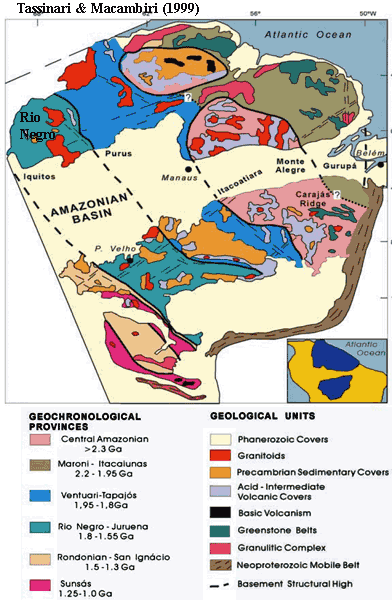
| Paleogeography | ||
| EARTH | South America |

The core of South America is Amazonia (northern Brazil). The geologically stable core of South America is the Amazonian craton, roughly coterminous with northern and central Brazil and the inland areas of Venezuela, both Guyanas, and Suriname. Most of western South America is composed of ephemeral orogenic mountain ranges which come and go on timescales of a few 100 My. Other bits and pieces have joined (Uruguay) or left (Central Texas?) Amazonia at various times in the geological past. However, the unchanging hub of all this activity was Amazonia. The only other significant cratons now associated with South America, the São Francisco and Rio de la Plata, are both immigrants from Africa. Iacumin et al. (2001).
Amazonia formed in the Paleoproterozoic from Archean and Paleoproterozoic pieces. The only large stretches of Archean basement remaining in Amazonia are located in the eastern section of Amazonia, mostly in the southeastern corner. Most of the rest of Amazonia was intruded and sutured together in the Paleoproterozoic. The only significant exception is the northwestern Rio Negro Province, which lies along the Brazilian-Columbian border. This province formed as an extension of Amazonia in the Mesoproterozoic. Tassinari & Macambira (1999); Sial et al. (1999). For the subsequent development of the region, see Brito Neves et al. (1999).